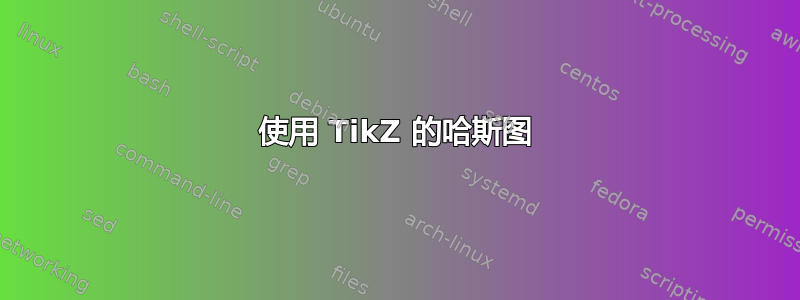
答案1
非常原始的Ti钾Z 解决方案(仍在学习 ;-)):
\documentclass{article}
\usepackage{mathtools}
\usepackage{amssymb}
\usepackage{tikz}
\begin{document}
\begin{tikzpicture}
\draw[gray] (0,0) -- (0,6cm);
\draw[gray,dashed] (0cm,6cm) -- (0,7cm);
\fill ( 0,0cm) circle[radius=1mm,black];
\fill ( 0,3cm) circle[radius=1mm,black];
\fill ( 0,6cm) circle[radius=1mm,black];
\node at (0.5cm,3cm) {$\mathbb{R}$} ;
\node at (0.5cm,6cm) {$\mathbb{C}$} ;
\node at (0.5cm,0cm) {$\mathbb{Q}$} ;
\end{tikzpicture}
\end{document}
编辑--一些改进
\documentclass{article}
\usepackage{mathtools}
\usepackage{amssymb}
\usepackage{tikz}
\begin{document}
\begin{tikzpicture}
\coordinate (A) at (0,0);
\coordinate (B) at (0,3cm);
\coordinate (C) at (0,6cm);
\coordinate (D) at (0,7cm);
\draw[gray,line width=1.5pt] (A) -- (C);
\draw[gray,dashed,line width=1.5pt] (C) -- (0,7cm);
\fill (A) circle[radius=1mm,black];
\fill (B) circle[radius=1mm,black];
\fill (C) circle[radius=1mm,black];
\node [xshift=0.5cm] at (A) {$\mathbb{Q}$} ;
\node [xshift=0.5cm] at (B) {$\mathbb{R}$} ;
\node [xshift=0.5cm] at (C) {$\mathbb{C}$} ;
\node [xshift=0.5cm] at (D) {?};
\end{tikzpicture}
\end{document}
答案2
像这样?
这很容易:
\documentclass[border=3mm,tikz]{standalone}
\usetikzlibrary{calc,chains}
\usepackage{amssymb}
\begin{document}
\begin{tikzpicture}[
node distance = 11mm,
start chain = going above,
set/.style = {shape=circle, fill= red,% fill determine color of fill
inner sep=2pt, outer sep=0pt,
label=right:$\mathbb{#1}$,
join= by -, on chain,
node contents={}}
]
\node (q) [set=Q];
\node (r) [set=R];
\node (c) [set=C];
\draw (c) -- +(0,0.5);
\draw[dashed] ($(c)+(0,0.5)$) -- + (0,0.7) node[right] {?};
\end{tikzpicture}
\end{document}
对于节点N定位使用 Ti钾Z 库chains,带 的节点位置?使用 库calc。除带 的节点外,节点的文本以标签形式添加?。
编辑:上述代码的好处是,节点样式在一个地方确定;,位置也由 集中确定node distance。因此,对图片的任何更改都很容易实现。例如,现在我更改节点的颜色并使其变小一点。
对于初学者来说,这种方法可能看起来不太直观或复杂。但是,在绘制了例如五十张类似的图片之后,所示的方法将显示其优势。:-)
答案3
一个简单的解决方案(你可以尝试一下!)
一个简单的解决方案(你可以尝试一下!)
\documentclass[a4paper,11pt]{article}
\usepackage[frenchb]{babel}
\usepackage[T1]{fontenc}
\usepackage{amssymb }
\usepackage{tikz}
\begin{document}
\begin{tikzpicture}
\node[circle,fill,inner sep=0,minimum size=2mm,label={right:$\mathbb Q$}](Q) at (0,0){};
\node[circle,fill,inner sep=0,minimum size=2mm,label={right:$\mathbb R$}](R) at (0,2){};
\node[circle,fill,inner sep=0,minimum size=2mm,label={right:$\mathbb C$}](C) at (0,4){};
\draw[thick,blue] (Q) --(R)-- (C);
\draw[thick,dashed,blue] (C)--++(0,1);
\end{tikzpicture}
\end{document}
答案4
PSTricks 解决方案:
\documentclass{article}
\usepackage{pstricks}
\usepackage{amssymb}
\usepackage{mlist}
\newmset\setQ{Q}
\newcommand*\set[2]{\uput[0](0.05,#1){$#2$}}
\begin{document}
\begin{pspicture}(0.45,6)
\psline[linecolor = gray](0.05,0.1)(0.05,4.8)
\psline[linecolor = gray, linestyle = dashed](0.05,4.8)(0.05,5.9)
\psdots[dotsize = 3pt 2](0.05,0.15)(0.05,2.075)(0.05,4)
\uput[0](0.05,5.9){$?$}
\set{4}{\setC}
\set{2.075}{\setR}
\set{0.15}{\setQ}
\end{pspicture}
\end{document}







